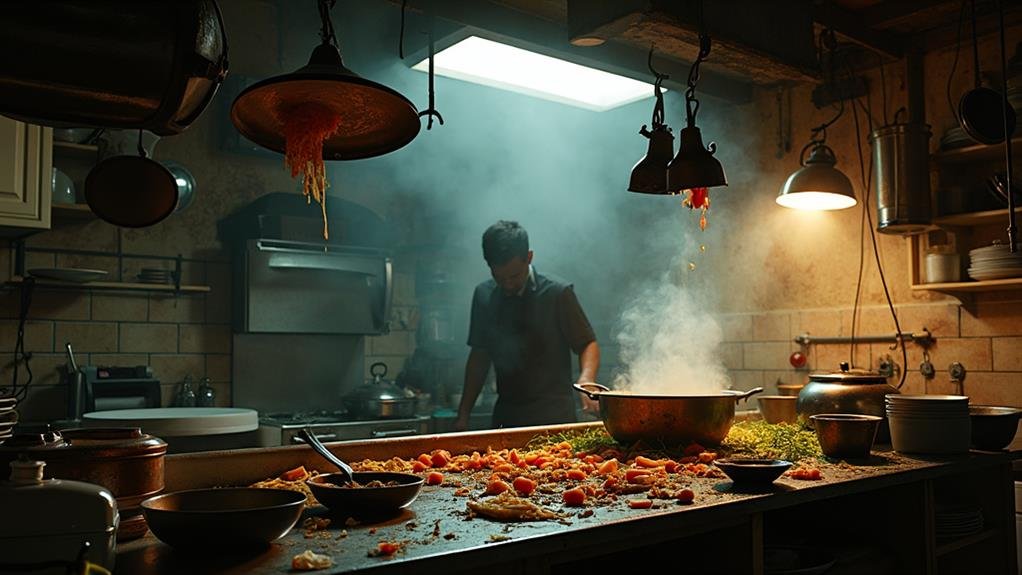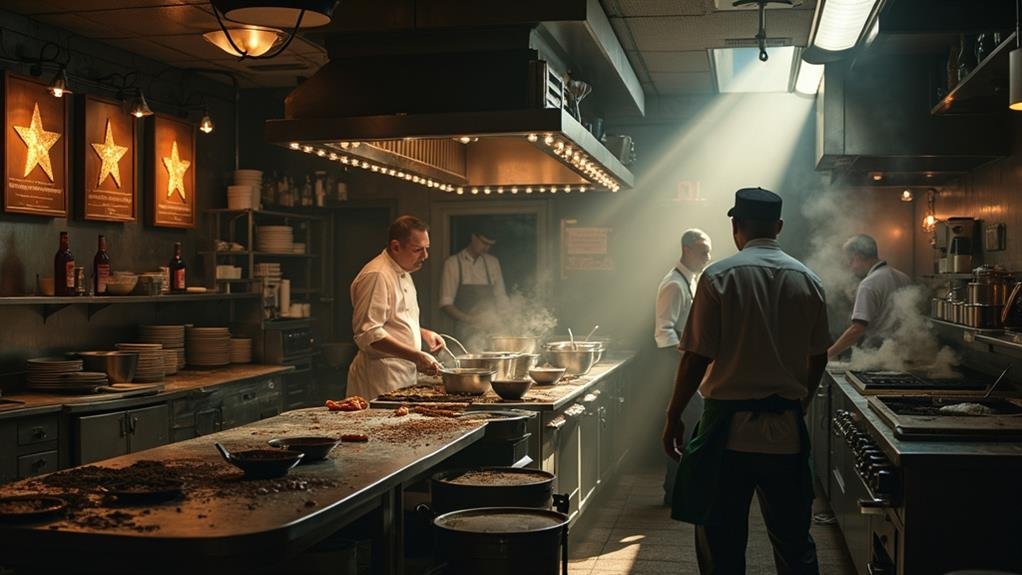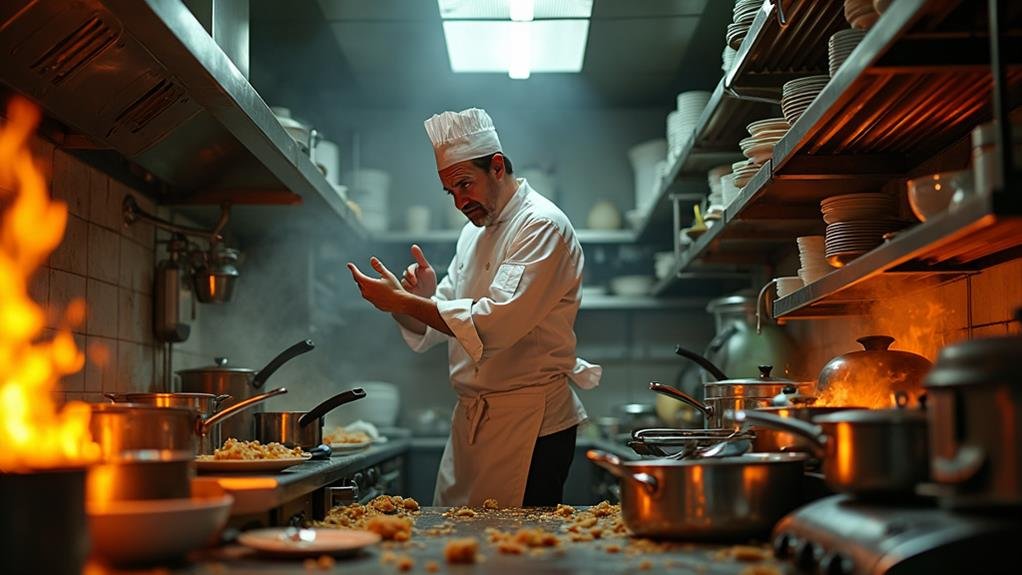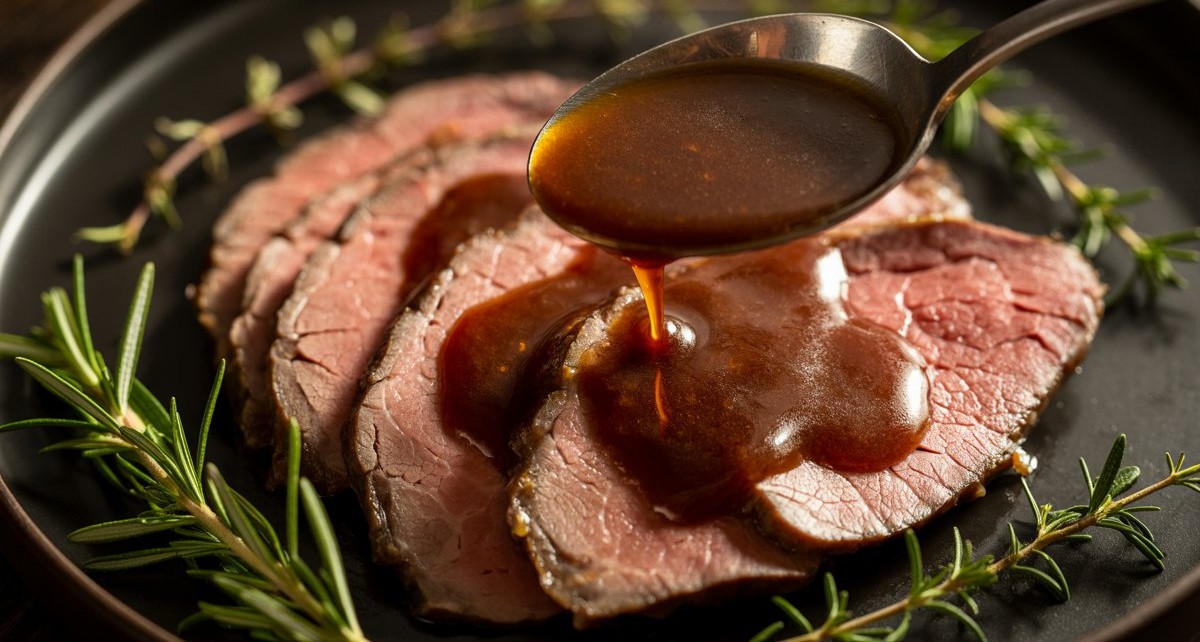Gordon Ramsay's loss of Michelin stars stems from a mix of ambition and inconsistency in quality. His flagship New York restaurant faced scrutiny due to declining service and fluctuating menu quality, which upset patrons. The Michelin Guide's anonymous inspectors prioritize consistency, creativity, and overall dining experience, metrics that Ramsay struggled to maintain amid commercial pressures. Changes in culinary trends and the need for innovation further complicated matters. Despite these setbacks, Ramsay's determination to reclaim his stars is evident through his focus on team training and menu improvement. There's much more to uncover about his culinary evolution and future plans.
The Rise of Gordon Ramsay
Gordon Ramsay's ascent in the culinary world is truly extraordinary. Starting his culinary journey in Scotland, Ramsay apprenticed under renowned chefs, refining his techniques and cultivating a passion for exceptional cuisine. His unwavering quest for perfection led to the establishment of several acclaimed dining establishments, including his first restaurant in Chelsea, which achieved three Michelin stars. Ramsay's reputation skyrocketed as he consistently earned Michelin stars, a prestigious symbol of culinary excellence that reflects his expertise in gastronomy.
Throughout his career, Ramsay became famous not only for his outstanding culinary skills but also for his intense demeanor and unwavering dedication to quality, rooted in his modest beginnings. He built a brand that resonates with aspiring chefs and culinary aficionados. His popular television programs, such as "Hell's Kitchen" and "MasterChef," solidified his fame, bringing fine dining experiences into the living rooms of millions.
Ramsay's tireless work ethic and creative approach to gastronomy have earned him numerous accolades and sparked inspiration in a new generation of chefs. By challenging norms and expecting excellence, he has transformed the understanding of Michelin stars and the pursuit of culinary success. His culinary journey exemplifies the profound impact of passion and commitment in the world of gastronomy.
Michelin Stars Explained

Michelin stars represent a prestigious accolade in the culinary realm, awarded to dining establishments that showcase remarkable quality and creativity. The Michelin Guide, initiated by the Michelin tire company in 1900, evaluates restaurants through a discreet process carried out by anonymous inspectors. These inspectors examine various factors, including ingredient quality, preparation skills, and consistency over time. Securing a Michelin star is a notable achievement, while the loss of stars can severely impact a restaurant's reputation. In the culinary landscape, maintaining high standards is crucial, akin to achieving the ideal texture in desserts, such as ensuring the gooeyness of blondies reflects a chef's meticulous attention to detail and commitment to excellence.
When a restaurant loses stars, it typically indicates a drop in quality or innovation, which may result in reduced customer visits and financial difficulties. Renowned chefs, such as Gordon Ramsay, experience immense pressure to uphold these distinctions. For example, Ramsay's flagship establishment in New York City previously held multiple stars but confronted the harsh reality of losing accolades due to evolving culinary trends and expectations.
The Michelin rating system accounts for more than just cuisine; it also considers the overall dining experience, encompassing service and atmosphere. For food enthusiasts who value culinary artistry, understanding this system sheds light on the delicate balance chefs must maintain to keep their stars illuminating. Ultimately, Michelin stars serve as both a prestigious recognition and an ongoing challenge for culinary professionals.
The Downfall Begins

The journey to culinary greatness often encounters unforeseen obstacles, and the decline of Gordon Ramsay's flagship eatery in New York exemplifies this reality. Once revered for its creative cuisine and exceptional service, the establishment's standing began to falter, signaling a pivotal change in Ramsay's distinguished career. One may question how a chef celebrated for his unwavering commitment to quality could experience such a setback. Despite his culinary expertise, Ramsay encountered hurdles akin to those faced by participants in his cooking competitions, resulting in a deterioration of the dining experience.
As the restaurant struggled to uphold its previously high standards, patrons observed discrepancies in both the dishes and the service. This decline in quality led to dissatisfaction among guests, who anticipated a top-tier experience. Reviews became increasingly unfavorable, and media scrutiny intensified, placing Ramsay's venue under the spotlight. With the mounting pressure, the atmosphere within the kitchen transformed, impacting staff morale and productivity.
Ultimately, this downturn culminated in the loss of Michelin stars, a stark reminder that even the most skilled chefs face challenges. The restaurant's decline serves as a cautionary narrative in the competitive realm of gourmet dining, illustrating that sustaining excellence demands relentless vigilance and adaptability.
Factors Contributing to Loss

As the decline in quality became clear, several factors led to the loss of those prized Michelin stars. Initially, inconsistency in menu offerings played a crucial role. Diners expect a specific standard, and when their favorite meals fluctuate in quality, disappointment often ensues. Furthermore, employee turnover can disrupt the restaurant's harmony. High turnover rates result in inexperienced chefs and servers, compromising the overall dining experience. Venues that host a variety of performers, such as Hell's Kitchen in Minneapolis, often prioritize consistency to uphold their reputation.
Another contributing factor is the pressure for commercial success. As Gordon Ramsay expanded his brand, the emphasis on preserving culinary excellence sometimes took a backseat to profitability. This shift in focus can dilute the original vision that earned those stars. Additionally, the ever-evolving food landscape demands innovation. If a restaurant becomes stagnant, it risks losing its Michelin status as critics seek new and exciting experiences.
Ramsay's Response and Future

Gordon Ramsay's reaction to losing Michelin stars demonstrates his commitment to culinary excellence and flexibility. Rather than fixating on the setback, he embraces the challenge as a chance for development. With a portfolio that includes his acclaimed restaurants like Restaurant Gordon Ramsay and Petrus, Ramsay's strategy centers on honing his culinary techniques and enhancing his menu to satisfy the rigorous standards associated with Michelin recognition. He acknowledges the constantly evolving culinary landscape, and his readiness to innovate is essential for continued success.
Looking to the future, Ramsay is resolute in his quest to regain his lost stars. He dedicates resources to training his culinary team, ensuring they align with his vision for quality and innovation. By emphasizing fresh, seasonal produce and enriching the overall dining experience, he aspires to craft dishes that appeal to both critics and patrons.
Additionally, Ramsay values the significance of constructive feedback. He actively pursues insights from diners and culinary professionals, using their perspectives to inform strategic decisions for his establishments. This proactive stance not only underscores his adaptability but also reaffirms his commitment to culinary excellence. Despite facing this challenge, Ramsay's resilience and determination promise a bright future in the competitive fine dining arena.





